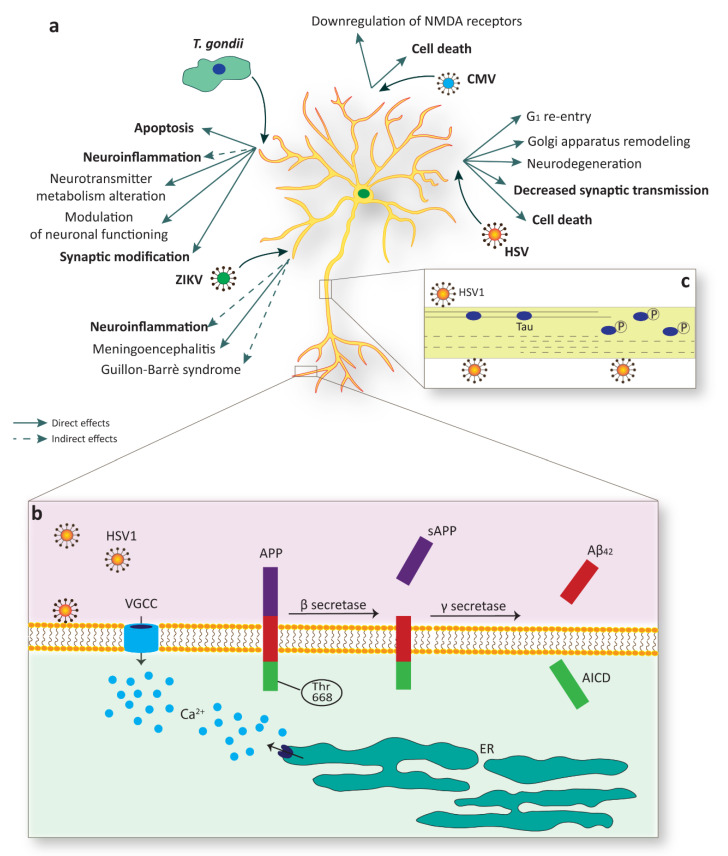Figure 3.
Mature neurons are a target of specific TORCH agents. (a) Multiple infections sustained by different pathogens, such as Zika virus (ZIKV), Toxoplasma gondii (T. gondii), cytomegalovirus (CMV), and Herpes simplex virus (HSV), evoke detrimental effects in mature neurons, including cell death or substantial alterations in function. (b) HSV-1 infection sustains membrane depolarization with the consequent increase in intracellular calcium via voltage-gated calcium channels (VGCC) or through depletion from intracellular stores, such as the endoplasmic reticulum (ER). HSV-1 infection is also linked to amyloid precursor protein (APP) phosphorylation of Thr668 which facilitates the amyloidogenic APP cleavage by BACE1 (as known as β secretase) and the release of Aβ42. AICD, APP intracellular domain. (c) A paradigmatic example of structural alteration due to viral infection is linked to the phosphorylation of the microtubule-associated protein MAPT (as known as Tau). Tau phosphorylation upon HSV-1 infection produces its release from microtubules with consequential loss in stability.

